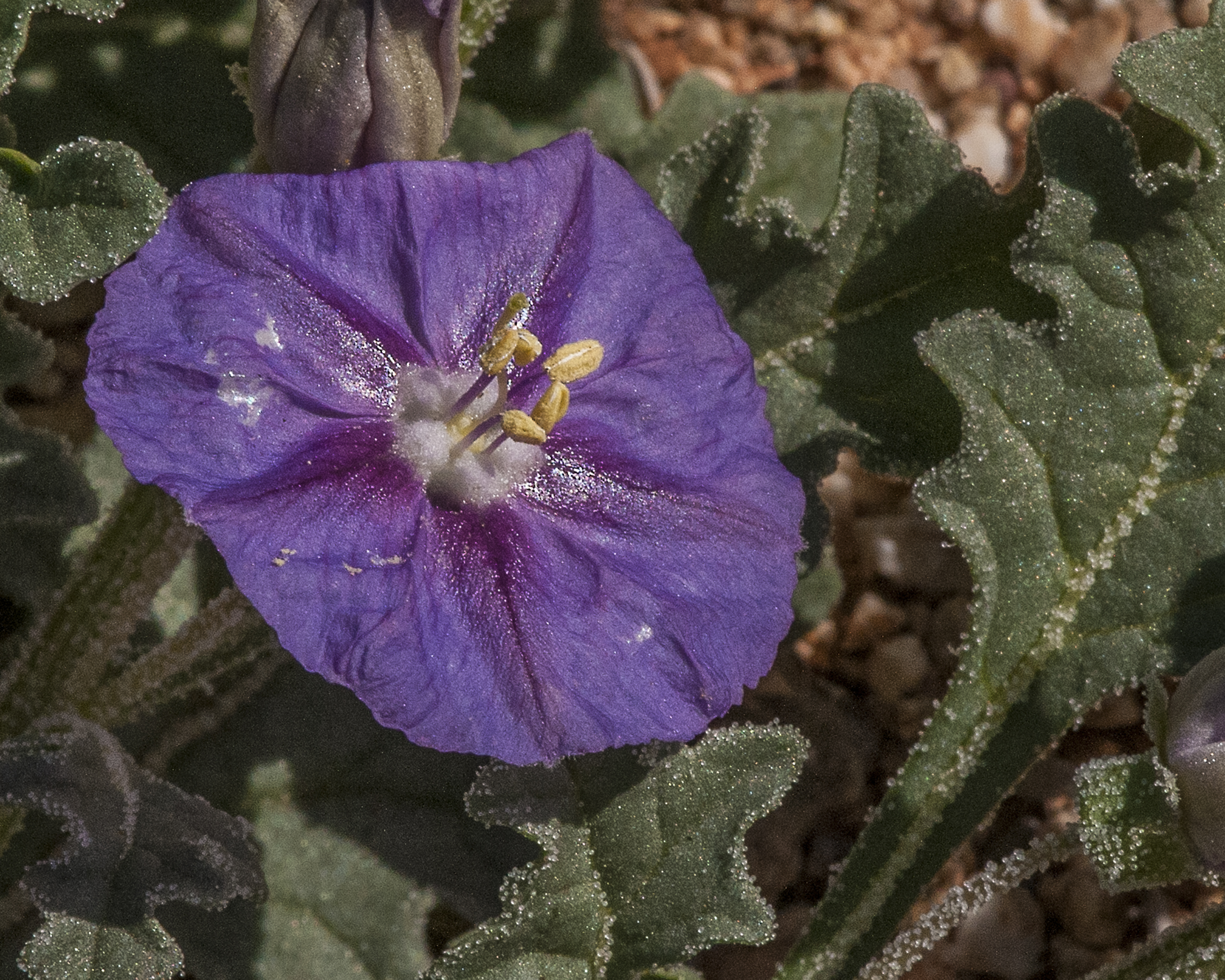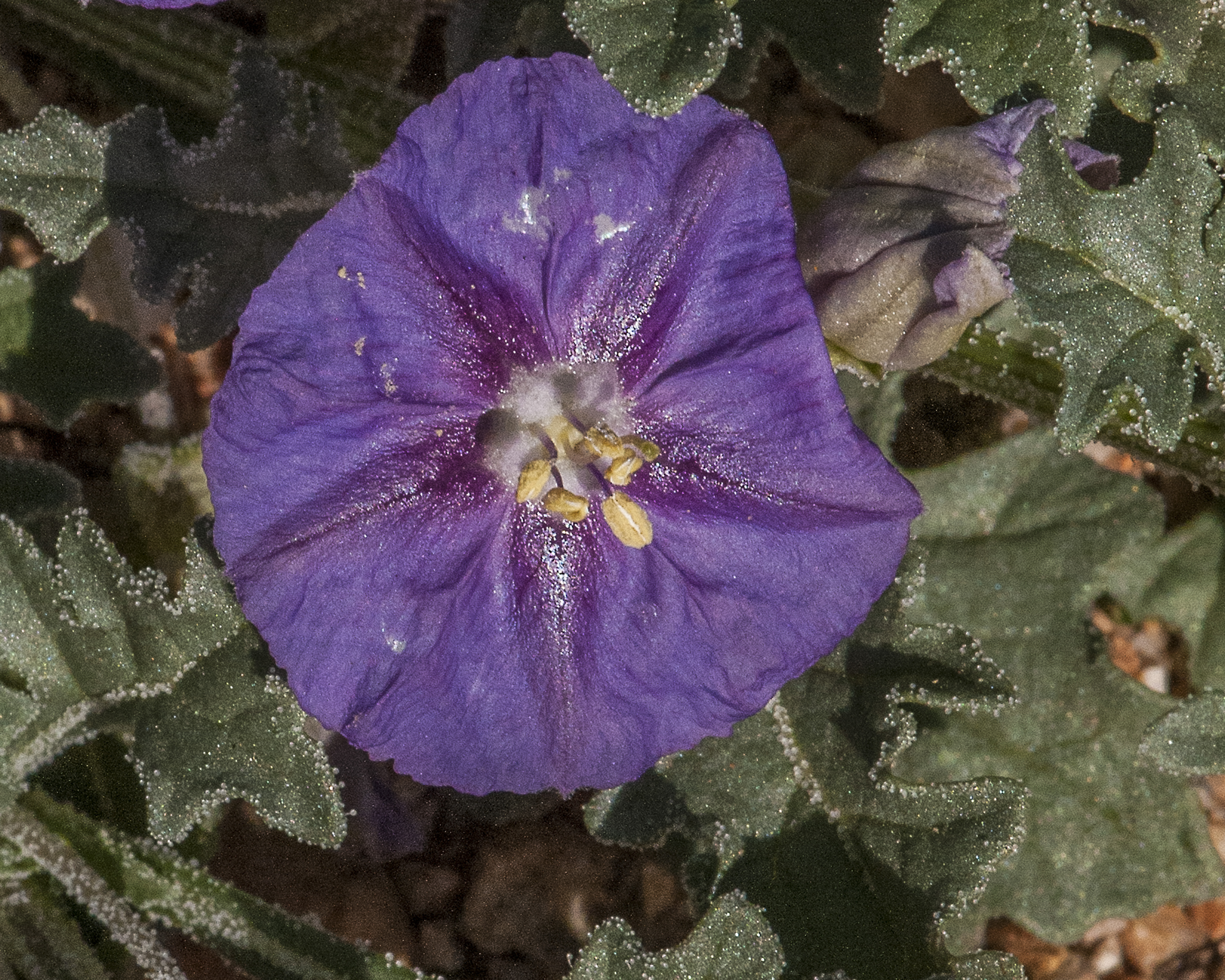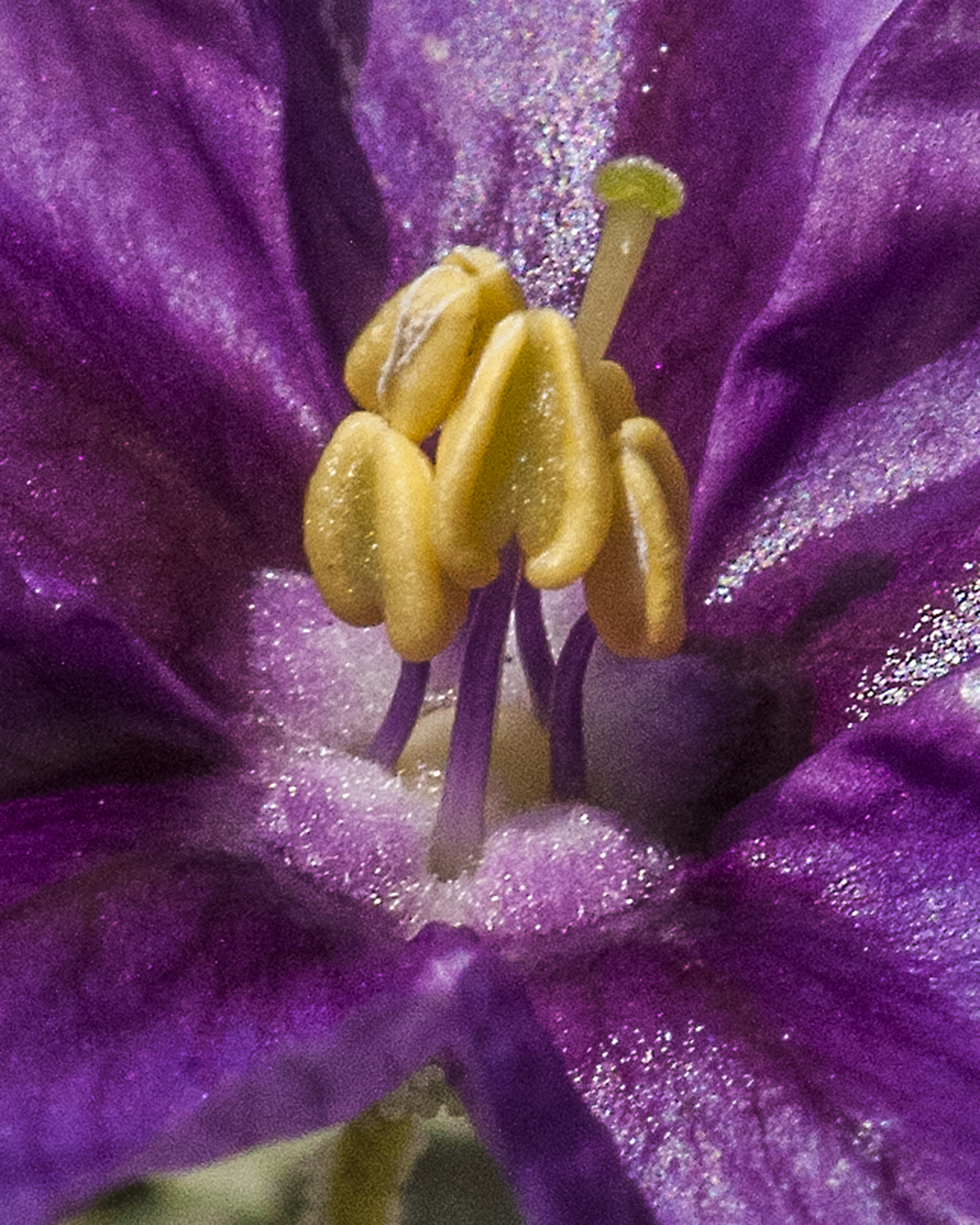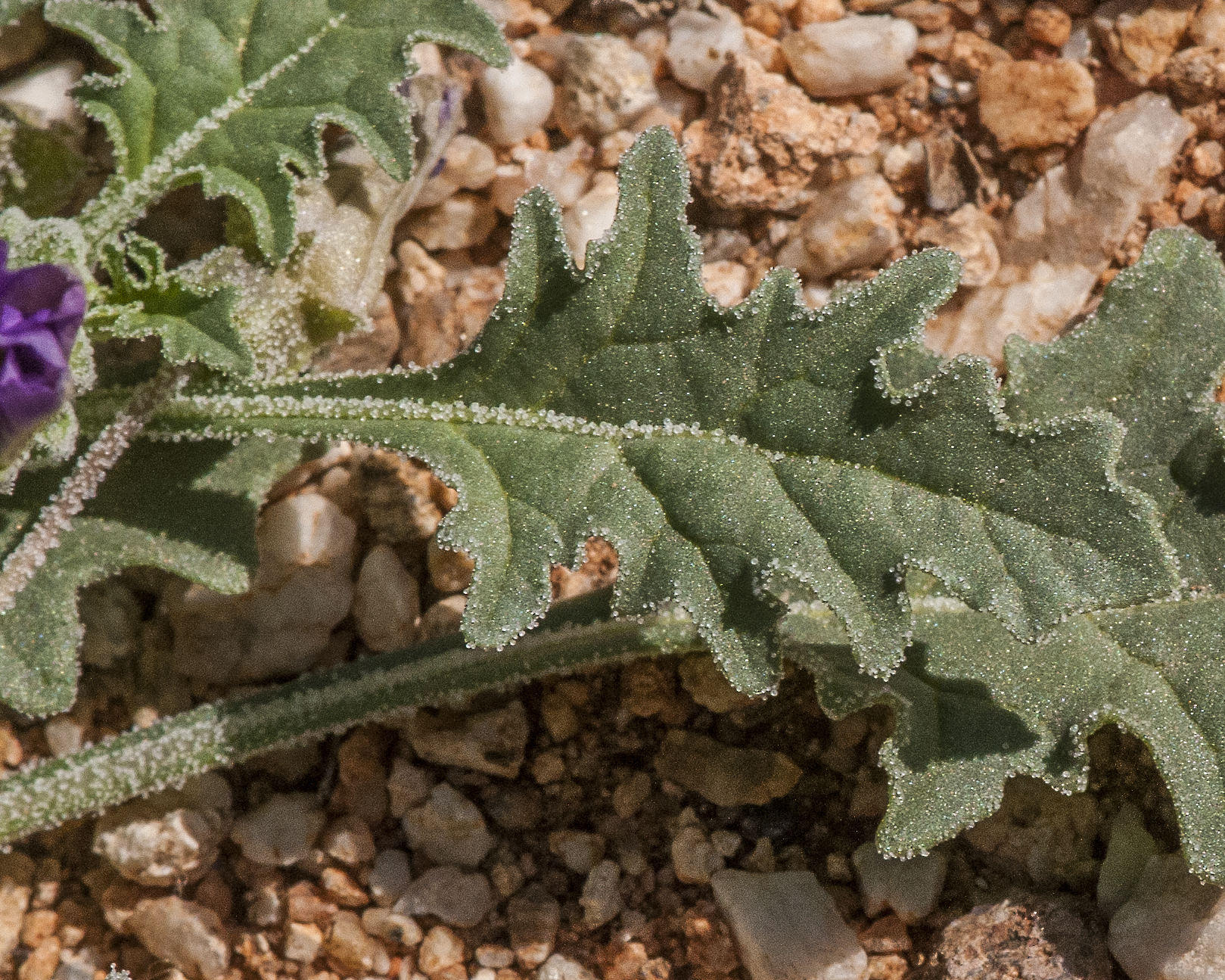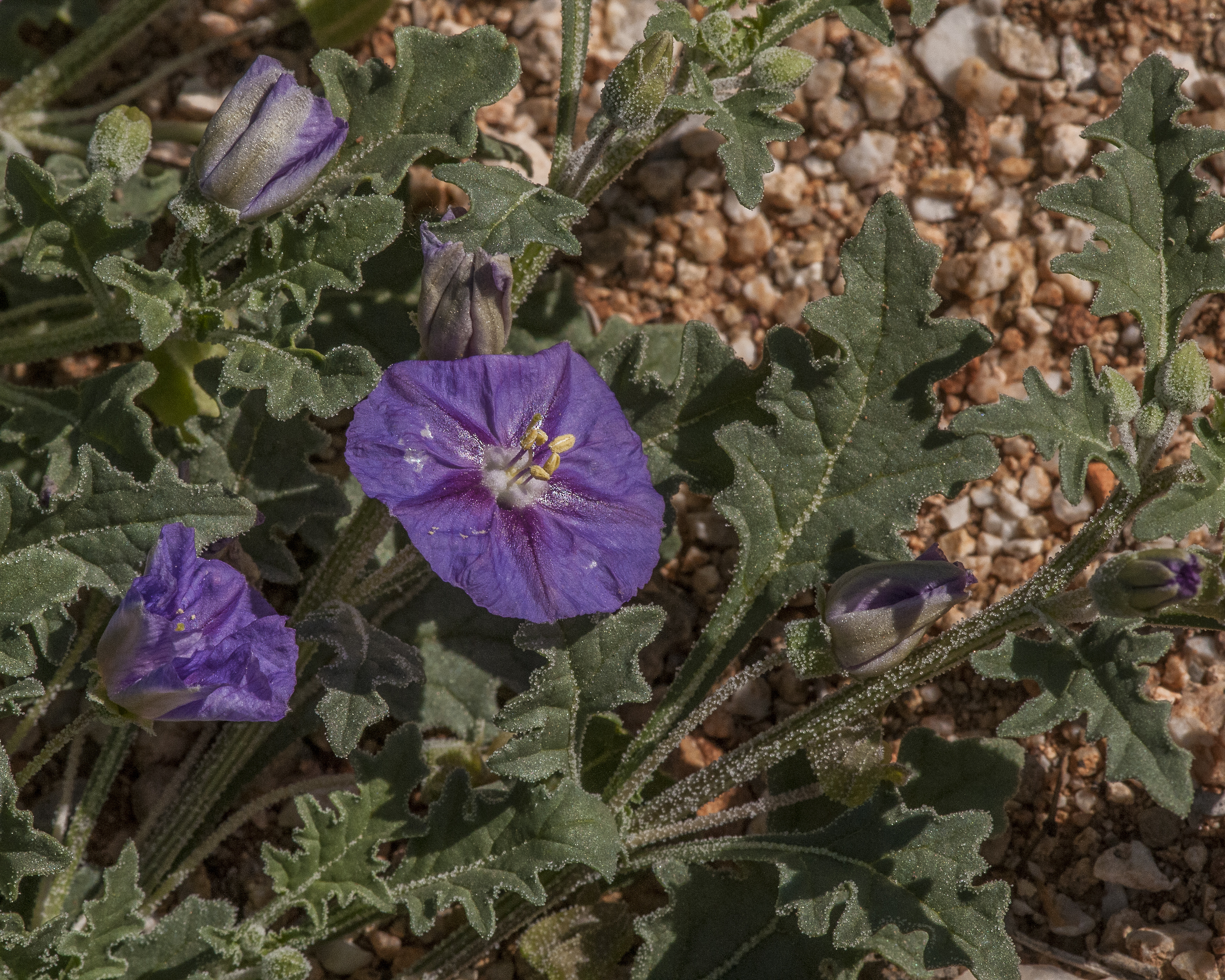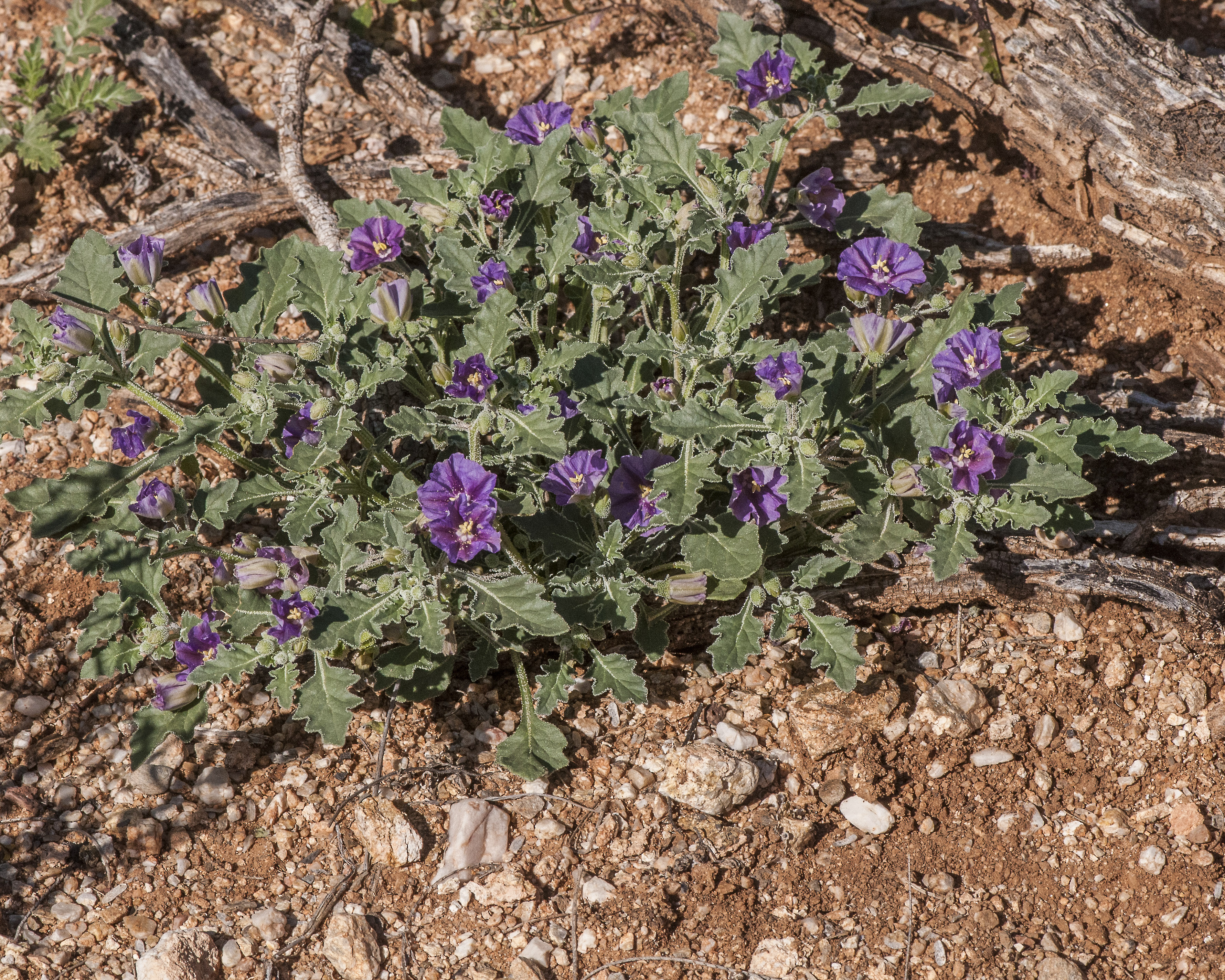Wildflowers of Southern Arizona
Chinese Lantern.
Quincula lobata.
Nightshade (Solanaceae) family.
Duration: Perennial. Nativity: Native. Lifeform: Forb/Herb. General: Herbaceous perennials, to 50 cm long, stems decumbent to spreading, with few branches, herbage sparsely whitish-scurfy, at least on young parts, otherwise glabrous to minutely papillate. Leaves: Alternate, oblong to ovate, 1-7 cm long, entire to lobed, tapered to the base. Flowers: Violet to deep purple with a white eye, showy, corollas rotate, 15-20 mm in diameter, calyxes 3-4.5 mm, becoming 15-20 mm long in fruit, anthers yellow, 1-2.5 mm long, infloresences borne on pedicels 3-4.5 mm long. Fruits: Berry. Seeds thick, spheric to reniform, surfaces coarsely or irregularly rugose (wrinkly) on the back. Ecology: Found on granitic soils, on dry lake margins, plains, mesas, and roadsides, from 1,000-5,000 ft (305-1524 m); flowering March-October. Distribution: Kansas to Texas, Nevada, Arizona, and Mexico. Notes: Look for this trailing Physalis with pretty purple flowers in Navajo, Greenlee, Maricopa, Pinal, and Pima counties in Arizona. Ethnobotany: Specific uses for this species are unknown, but other species in the genus have uses; berries eaten fresh from the vine or used to make preserves, and sun or fire dried and stored for future use. Etymology: Physalis comes from the Greek physalis, "a bladder or bubble," because of the inflated calyx, and lobata means lobed.
Rincon Mountains.
Saguaro National Park East.
Location: 0.6 mi from Loma Verde trailhead.
4/6/19
See SEINet Pictures and Description
See FireFly Forest Pictures and Description


